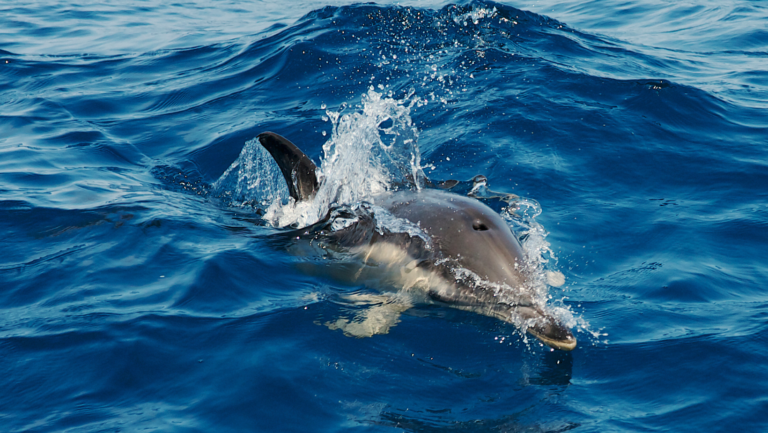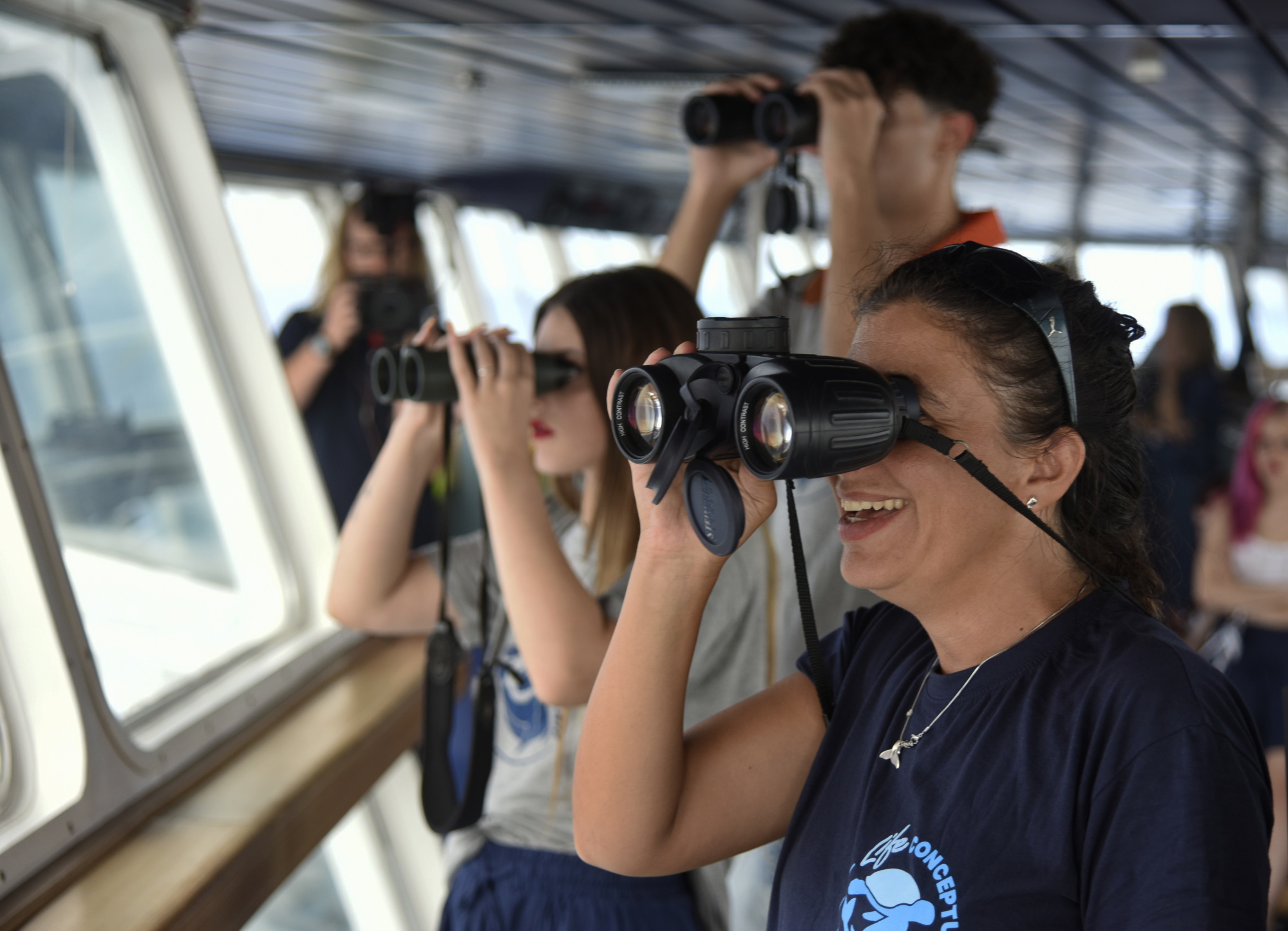The scientists of the LIFE Conceptu Maris project, with the help of volunteers, collected a lot of data on the species present in the Mediterranean, between June and August 2023

In the summer of 2023, more than 40 scientists from the European LIFE Conceptu Maris project embarked in the central and western Mediterranean on shipping company ferries, transformed for the occasion into floating laboratories for open sea research. In approximately 50 days of activity they were able to document all the species of cetaceans and turtles regularly present in the Mediterranean. Among these, some were observed in higher densities than in previous years.
While from the main deck of the ferries of the Balearia, Corsica and Sardinia Ferries, Grandi Navi Veloci, Grimaldi Lines, Minoan Lines and Tirrenia the binoculars scanned the horizon in search of cetaceans, turtles and sea birds, in the engine room of a select number of boats, water samples were collected for chemical and environmental DNA analyses. The latter is a new technique which, thanks to laboratory analyses, allows the species present in a stretch of sea to be identified by recovering tiny organic traces, dispersed in the water, which contain their DNA. Developing an investigation of this type on 16 routes in the Mediterranean required the commitment of an international, multidisciplinary team, which includes dozens of Italian, Spanish and French scientists working for ISPRA – Higher Institute for Environmental Science and Research, Capo Carbonara Marine Protected Area, Eco Ocean Institut, Cima Foundation, Anton Dohrn Zoological Station, Bicocca University of Milan, University of Palermo, University of Turin, University of Valencia, supported by Triton Research, for the video shooting of the project documentary and the communication activities, and by the CMCC Foundation. Dozens of volunteers, specially trained at the beginning of the summer, accompanied the researchers on trips into the open sea along most of the routes. To further involve the public, a photo contest has also been launched, dedicated to images of cetaceans and sea turtles, which closes on 24 September 2023.
The data collected shows a high frequency of fin whales, sighted especially in the Pelagos Sanctuary between Italy and France during the summer. Sometimes, in a single day, up to 30 individuals of this enormous marine mammal, which reaches 24 meters in length, have been observed. Large sperm whales are less widespread, but present in several deep sea areas in the central Mediterranean.
Among the smaller species, striped dolphins and bottlenose dolphins are almost omnipresent, with hundreds of individuals observed along all routes. It is more difficult to see the common dolphin, which therefore only has the name, at least in the central Mediterranean, but even in this case there has been no shortage of sightings.
Particularly interesting are the observations of beaked whales, Risso’s dolphins and pilot whales, cetaceans present at low densities and specialized in hunting squid in depth. The summer of 2023, in particular, saw an increase in pilot whale observations in the Ligurian Sea and along the French and Spanish coasts. The data collected will be used over the next year to build much more accurate distribution models of these localized species and to identify any trends compared to past years.
Even for sea turtles, 2023 showed some interesting signs, with a high number of loggerhead turtle sightings along the Italian and French coasts and also in the usually less frequented areas of the Pelagos Sanctuary. This species, which is by far the most common in the Mediterranean, accounts for more than 99% of the observations; the others belong to the rare green turtle and the large leatherback turtle.
With the experiences of this summer 2023, the first phase of Conceptu Maris was successfully concluded, which saw the development of new sampling techniques, with a multidisciplinary approach (which relies on multiple disciplines and technologies). The skills and procedures tested and transferred to key areas of the Mediterranean, such as the Pelagos Sanctuary between Italy and France, the Spanish cetacean migration corridor and the Adriatic region, will now be systematically replicated during next autumn and in 2024. We therefore proceed with great team work, achieved thanks to the support and collaboration of the shipping companies Balearia, Corsica and Sardinia Ferries, Grandi Navi Veloci, Grimaldi Lines, Minoan Lines, Tirrenia, which brings together the skills of the many researchers and entities involved with the common objective of protecting the giants of the Mediterranean.





